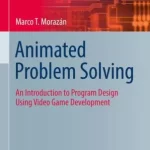Login to Download For Free
The book is divided in five parts. Part I focuses on the basics. It starts with how to write expressions and subsequently leads to decision making and functions as the basis for problem solving. Part II then introduces compound data of finite size, while Part III covers compound data of arbitrarysize like e.g. lists, intervals, natural numbers, and binary trees. It also introduces structural recursion, a powerful data-processing strategy that uses divide and conquer to process data whose size is not fixed. Next, Part IV delves into abstraction and shows how to eliminate repetitions in solutions to problems. It also introduces generic programming which is abstraction over the type of data processed. This leads to the realization that functions are data and, perhaps more surprising, that data are functions, which in turn naturally leads to object-oriented programming. Part V introduces distributed programming, i.e., using multiple computers to solve a problem.




 Animated Problem Solving An Introduction to Program Design Using Video Game Development 1st Edition by Marco T. Morazán
Animated Problem Solving An Introduction to Program Design Using Video Game Development 1st Edition by Marco T. Morazán
| 5 star | 0% | |
| 4 star | 0% | |
| 3 star | 0% | |
| 2 star | 0% | |
| 1 star | 0% |
Sorry, no reviews match your current selections